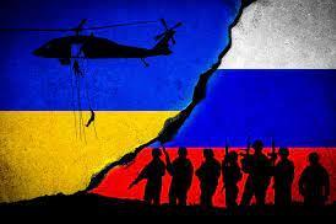The Russia-Ukraine conflict is just not a contemporary geopolitical struggle. It’s a historical force that has shaped the relationship between these two nations over centuries. History shows a complex whole story of shared experiences, territorial disputes, and cultural problems that continue in the present-day conflict.
The historical relationships of Russia and Ukraine, from the Middle Ages of Kievan Rus to the imperial ambitions of the Russian Empire, are involved with each other. Territorial expansion, religious division, and changes in power dynamics have left an indelible mark on the socio-political landscape of the region, being the foundation for future tensions and conflicts.
The bad relationship between the two countries began in earnest with the formation of the Soviet Union. After Kievan Rus, the kingdom considered to be the beginning of both Russia and Ukraine collapsed due to the invasion of the Mongolian Empire. Ukraine regions were annexed by Poland or other Eastern European kingdoms, while Russia, which founded Muscovy and expelled the Mongolians. Muscovy later founded the Tsardom of Russia and the Russian Empire became one of the world’s greatest powers in the 19th century. But when the Russian Empire fell and the Soviet Union was founded, Ukraine announced its independence but was later annexed.
Under Soviet Rule, Ukrainians had to suffer a lot. They were made to participate in World War 2 against Nazi Germany. What’s worse, in the 1930s, the worst famine raided Ukraine and one-tenth of Ukrainian people died. The Soviet government’s inappropriate response angered Ukrainians. Finally, Ukraine could announce their independence when the Soviet Union fell in 1991. But unfortunately, Ukraine was still close to Russia and there were many Russian Ukrainians living in Ukraine. After many Eastern European countries joined NATO, Ukraine also tried to join NATO but this only angered Russia. Eventually Russia annexed Crimea and threatened Ukraine, which led to the war in 2022.
The Russian invasion of Ukraine in February 2022 shocked the whole world. Nobody expected that a war caused by Russia could happen in the 21st century. Russia rapidly advanced and conquered some areas of Ukraine, even bombarding Kiev. It almost captured Kiev but eventually failed. Ukraine, which was supported by many Western countries, started to fight back against Russia. It succeeded, but still failed to push Russia out from the whole territory of Ukraine. Eventually, from late 2022 to 2024, both sides remain in a tense standoff in the South-Eastern part of Ukraine. The war has entered a protracted stage of fighting.
Many war experts predict the war will last much longer. Both sides shows no signs of retreating. “The outlook for an end to the war remains dark, and Russian President Vladimir Putin is stronger politically and militarily than he was a year ago,” said Barbara Zanchetta, a senior lecturer in the war department at King’s College London University. “The battlefield is also uncertain. Ukraine seems to have stopped attacking in the winter, but Russia has not made any breakthrough,” he said. “The outcome of the war depends on the decision of the U.S. and the European Union.” It is also widely expected that the war will end through negotiations rather than overwhelming either side by force.
The new cold war emerged in the 2010s and is coming out in earnest by wars of slaughter in the 2020s. Similar to the Israel-Hamas War in 2023, there could be many other major wars that could drive the world into chaos. Including Korea, It’s a time when it won’t be strange wherever the war breaks out tomorrow. There is a famous quote that the current 50 years is the era when it’s the most peaceful time throughout human history.
By. Jungwoo Choe


